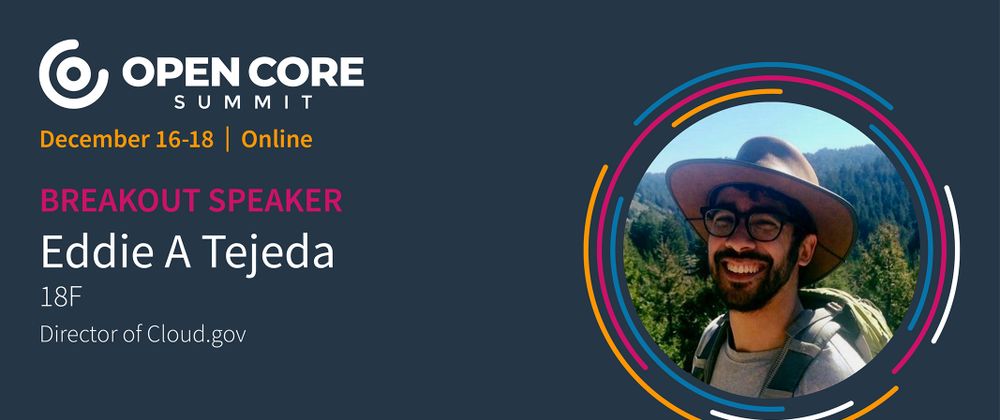Eddie A Tejeda has fifteen years of experience building technology products for civic institutions. He is currently the Director of Cloud.gov, a Platform as a Service (PaaS) that helps federal agencies deliver digital services without the need to manage the underlying server infrastructure.
Relevant Links
LinkedIn - Twitter
Cloud.gov, a Platform as a Service (PaaS) that helps federal agencies deliver digital services!
Eddie’s introduction and presentation topic: Why PaaS is the future of government infrastructure. Cloud.gov’s nudging towards sensible defaults - 0:00
Presentation Agenda - 0:30
Overview of cloud.gov - 1:05
Cloud.gov is funded by customers (other government agencies) - 1:41
Cloud.gov is an PaaS built on top of Cloud Foundry on top of GovCloud, with backed-in federal security compliance through FedRAMP - 2:41
Traditional IT vs. IaaS vs. PaaS - 3:22
Cloud.gov by the numbers, by agencies, and by most visited .gov domains - 4:06
Shared service: Let us focus on efficiency - 5:19
Benefits of the cloud.gov platform - 5:55
Back to cloud.gov’s mission: making it easier for the government to access cloud services - 6:40
Decision Fatigue: Paradox of Choice, Nudge theory, Convention over Configuration, and how this relates to software trajectories since the early 2000s (see: https://www.nytimes.com/2011/08/21/magazine/do-you-suffer-from-decision-fatigue.html) - 6:46
The rise of Kubernetes and how it relates to modern cloud services and thoughts on migrations - 9:50
There will be a shift back to frameworks that focus on developers. Refocus on developer experience. This is where PaaS comes back into the conversation. Customers will give up control for maintainability. - 11:17
In the long term, PaaS provides a consistent developer experience and consistent APIs. - 13:14
This presents a great opportunity for government. Governments need to maintain applications for multiple decades. - 13:37
As governments continue massive migration to cloud, every agency should consider using PaaS. With PaaS, agencies can bake in automated security and compliance requirements into the stack. Agencies can also attract small businesses who benefit from building on a trusted stack. - 13:58
Agencies need to support the next generation of developers - 16:01
JJ: I’m curious to dig into the origins of this program and how you embarked on it initially. How did it all come together? - 16:43
JJ: Have you operated fully in-house, or have you partnered with external vendors in the commercial open-source ecosystem? - 20:45
JJ: You talk about this customer dynamic, where you treat other agencies as your customer. How do you think through supporting those customers and operating it as a business? Do you do shared services, billing, metering based on consumption? How do you operate the business side - what do you charge for, how do you charge? - 22:35
JJ: How do you see the landscape at the federal government level in terms of open source? Friction points, resistance, challenges, opportunities, growth? - 25:50
Share your questions and comments below!



Top comments (0)